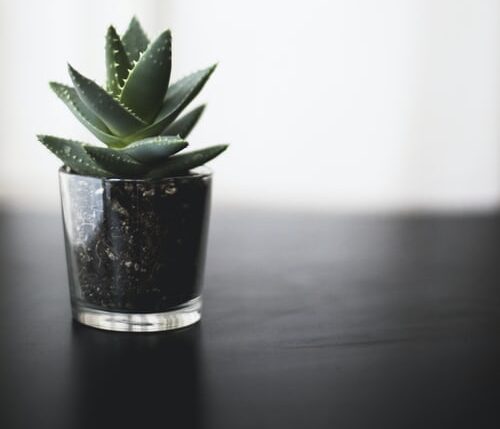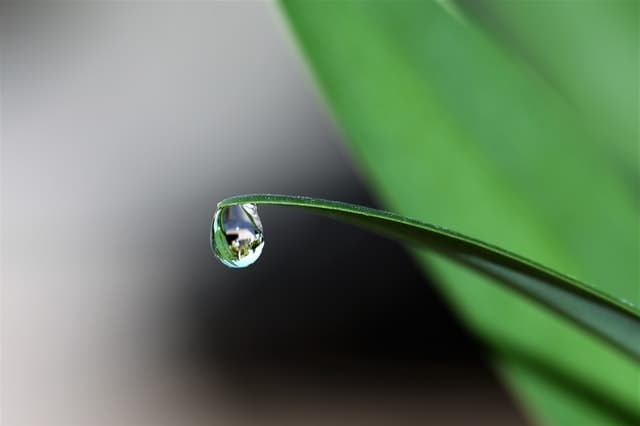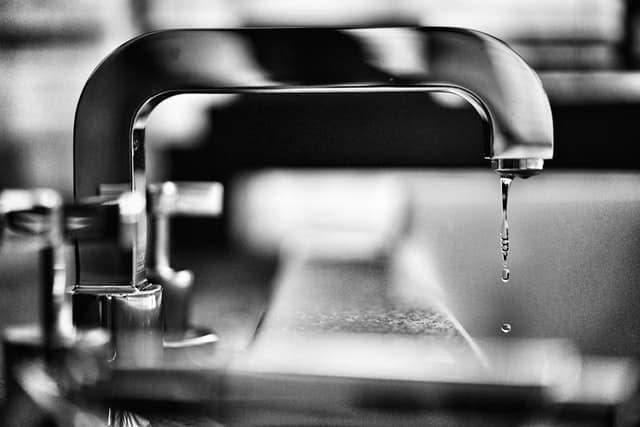When I first started growing succulents, I had no idea that the kind of water we use can have such a long term impact on plant health. It is only when I came to know that succulents are extremely sensitive to overwatering & unwanted chemicals, I started to dig more into this topic.
Is Tap Water Bad for Succulents? Tap water is rich in minerals and salts which are of no use for succulents. The water is of alkaline nature which is often regarded as hard water. It is rich in calcium along with chlorine, fluoride, chloramine, and lots of other components that end up accumulating in the soil and harming the succulent growth in the longer run.
Let’s explore more about what Tap water actually contains, why it is bad for the succulents, what are the bad effects of using tap water, and potential substitutes you can use to replace tap water.
Table of Contents
Why Tap water has chemicals in the first place?
Most of the chemicals are added to the water by the local municipal corporation as a measure to make the water safe for drinking.
- This is not a new thing, Chlorine has been added in drinking waters for purification for centuries. These components are added in controlled amounts which are enough to kill off pathogens but are safe for us to drink.
- However with time, the chlorine, fluoride, lime, and other variety of minerals present in the tap water can degrade the soil quality

Is Tap Water safe for Succulents?
The tap water is commonly treated with chemicals by local municipal corporations for the safety of using it for drinking purposes. However, owing to this treatment, the water is filled with minerals and chemicals which is completely obsolete for succulent growth.
In fact, if you keep on using tap water on a regular basis for watering succulents, the accumulation of those unused minerals in the soil can directly distort the growth of the plant.
- This is a prominent reason behind the ill health of many succulents which can be pretty hard to figure out. Despite providing the plant with the right amount of water and sunlight, it can get into a bad shape if the soil is contaminated with these minerals.
- The effect of using tap water is more prominent if you are growing your plants in pots. As the soil area is limited, the effects will be greater.
Also Read:
What are the effects of using Tap water rich in unwanted minerals and chemicals?
- Change in the soil color of the succulent: Long term usage of unfiltered tap water can make the adjacent soil go a little bit whiter or paler in color
- Root Burning can reduce the efficiency of absorbing nutrients: Roots are the most vital organs of any plant. Succulents are no exception. Most of the absorption of minerals, water, and other nutrients occurs through the roots. The health of the succulent roots is directly related to the overall health of the whole plant. Accumulation of chemicals in the soil can end up damaging the roots and hamper its normal functionalities
- Change of Leaf color: Leaves can become yellow and develop brown edges
- White Spots on the Succulent: Pale appearance of the succulents along with white dotted spots all over can be a serious sign of soil contamination.
- The succulent can end up being stunted or malnourished: As proper absorption of nutrients and water is getting affected, the effects will start to show in the upper part of the succulent. The succulent in order to cope up with the situation will end up losing leaves, branches and will lose its vibrancy
How to remove harmful chemicals from Tap water?
There are a few ways by which you can minimize the damage imparted by the tap water.
- Let the Water rest: Collect tap water in the watering container and leave it uncovered as it is overnight or for a day. This is a natural process of filtration where all the unwanted salts will settle at the bottom of the container. Most of the Chlorine will evaporate off the water within that time frame. Now use all the water except that little portion at the bottom for watering the succulents.
- Use Proper Activated Charcoal Filters or Reverse Osmosis Systems: These filters helps in not only removing pathogens like protozoa, bacteria, virus but also removing chemical contaminants like sodium, chloride, copper, etc.

What to do now in case you have been using Tap Water for watering your succulents?
- Firstly Give a proper look at the soil color: See if the soil looks glum and whitish or pale. If the soil looks okay then everything is fine till now. If you have not changed the potting soil in years, consider changing it.
- Now properly observe the health of your succulent: see if it’s looking vibrant or pale…The leaves are in proper health or are facing color changes. Watch for white or brown dots on the plant body. If the succulent has none of these issues, it is good to go.
For Best watering Guide & troubleshooting underwatering or overwatering issues, Read:
- When Should Succulents be Watered? (At What Time of the Day)
- How to Water Succulents Without Drainage
- “Why are my Succulent Leaves Shriveling & Curling down?”
Substitutes for Tap water
If you have been using tap water all this time and wondering “What do I water my succulents with?” then these are some prominent options you can use:
Rain Water
Succulents love slightly acidic soil and water of acidic pH(roughly 6 pH). This is one of the reasons, rainwater is the absolute best water to use for succulents as they are slightly acidic in nature. Collecting rainwater is not hard and succulents have extremely low watering needs. So if you make a good reserve whenever it rains, it can last you for weeks.

Pros of using Rain Water for succulents
- Rainwater in turn helps in flushing chemicals away from the soil and in aiding the succulent roots to better absorb things better.
- Rainwater can act as a tonic for your succulents especially if they have been a little off.
- It’s a totally free process.
Cons of using rainwater for succulents
- You have to depend on nature for the water. In case you live in a place that does not get much rain, it can be troublesome.
- You have to go through the hassle of collecting & storing at least on a monthly basis.
Distilled Water
Using bottled distilled water is a viable option. Distilled water is totally free from any kind of minerals and salts. However, the downside is it’s not a free option. Aside from this, just like they dont have the harmful contaminants, they dont have the beneficial minerals also.
They are totally neutral and only do the function of fulfilling the thirst of the succulents, no other added benefit of providing them with added nutrients that you can get while using rainwater(Source).
Pros of using Distilled water for succulents
- Totally free of harmful minerals and chemicals
- Sufficiently available at all places
- Not very pricey
Cons of using Distilled water for succulents
- Not a Free option.
- Lacks essential minerals and electrolytes
- You have to seriously consider fertilizing your succulents at least twice a year if you regularly use distilled water.
Water from Reverse Osmosis Filter
This is the most productive option, especially in the long term. Opt for activated charcoal purifiers or reverse osmosis water purifiers only. It is an extremely popular option for watering in the farming community. The reverse osmosis process uses a filter that traps bacteria, protozoa as well as chlorine, iron, and loads of other minerals & chemicals from the water.
Pros of using water Filters
- Will save you from all kinds of headaches of collecting or storing rainwater.
- Filters are highly efficient in removing not only contaminants but all kinds of pathogens.
- Does not remove all of the essential minerals
- Most RO purifiers allow You to change the water pH, so this is a very useful feature as you can adjust the water pH from time to time as per need
Cons of using water filters
- Will require a one-time investment
Best Watering Tips to adhere to while using Tap water
If you want your succulents to grow healthy and strong then consider switching from tap water to distilled or filtered water as soon as possible. However, if you wanna experiment a bit more with tap water then adhere to the following points for better safety:
- Use vinegar to balance out the soil pH: Mix one teaspoon of vinegar with one gallon of water and apply this mixture once a month to the potting soil to reduce the alkalinity of the soil. The exact amount of vinegar you need to add depends on the extent of the alkalinity of the tap water in your place.
- Always have drainage holes at the bottom of the pots. It carries away the excess water and also the unneeded minerals to some extent.
- Always, leave the container having tap water alone for a day before using it to water the plants.
- Keep an eye over your succulent and the adjacent soil for signs of soil contamination.
- Consider repotting your succulent at least once in 1 to 1.5 years. Normally ita healthy to repot every 2 to 3 years but in the case of using tap water regularly, better be safe than sorry.
Can you use spring or river water for watering succulents?
River & spring water can be used for watering succulents however, in that case, you will have little to no knowledge of what is the composition of the water you are using. Water from these places remains flooded with a variety of pathogens including fungi, bacteria, protozoa, etc.
Alongside this, the water may be also polluted with chemicals or insecticides. If you know its a clean water spring then you can add a little bit of chlorine in it to get rid of the majority of pathogens. However, you again need to get rid of the chlorine before watering the succulents. So all in all considering the hassle, using tap water is a better option here(Source).
Conclusion
If you continue to use tap water, sooner or later you gonna notice some of its adverse effects. You have three options to tackle this, to let it rest & let the salts settle in the bottom, the chlorine to evaporate.
Change the potting soil more frequently than you would normally do, generally once in a year is a great idea. The last option is to completely switch to one of the alternatives to tap water mentioned above.
Distilled water won’t do any harm to the succulent however the succulent won’t is able to grow to its full potential as many vital elements are also missing from the soil.
- You will have to substitute for the missing minerals, by fertilizing twice a year during the growing season, adding Epsom salt or vinegar from time to time with water.
- However, using distilled water is still a safer option than tap water.
Rainwater and water from reverse osmosis filters are the ultimate solutions for this problem. They are free from harmful chemicals and provides succulent soil exactly with the components they need.
Also Read:
